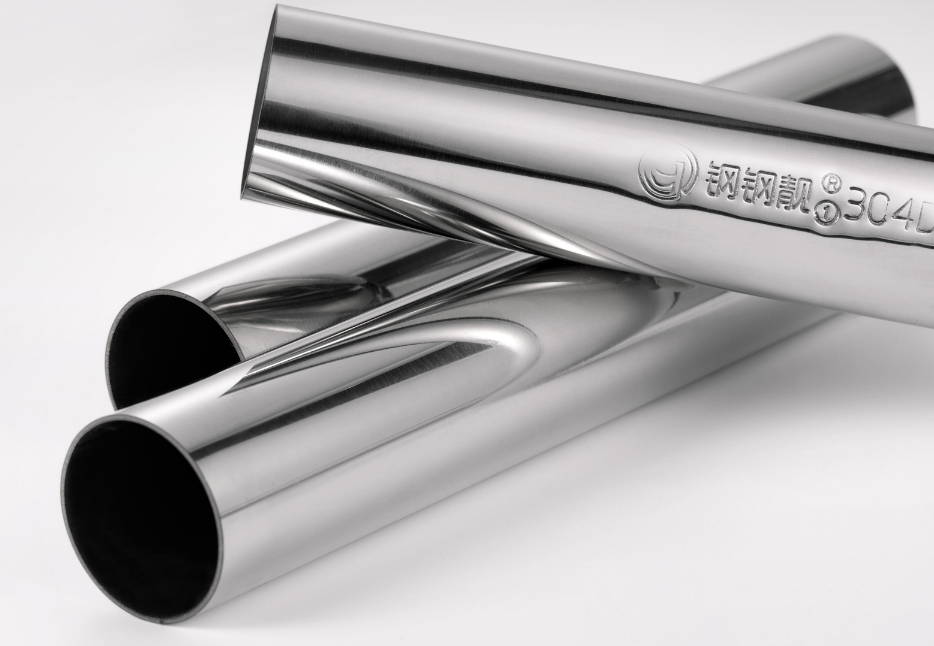Stainless steel is a popular material for various applications due to its corrosion resistance and durability. Two of the most common types are stainless steel 304 and 304D, but what are the differences between 304 and 304D Stainless Steel? In this blog post, we will explore the similarities and differences between these two materials. So, whether you are in the manufacturing industry or just interested in stainless steel, please continue reading to learn more!

Hvað er 304 ryðfrítt stál?
304 stainless steel is one of the most commonly used stainless steels in many industries. It is an austenítískt álfelgur containing at least 18% chromium and 8% nickel, which gives it strong corrosion and oxidation resistance. Its high ductility and good weldability make it a popular choice for applications where strength and durability are critical.
One of the notable characteristics of 304 stainless steel is its ability to withstand extreme temperatures without losing its structural integrity. This makes it ideal for use in harsh environments such as chemical processing plants, food processing facilities, and medical equipment.
304 stainless steel has excellent hygienic properties and is suitable for kitchen utensils such as sinks, pots, pans, cutlery, and tableware. In addition, it resists stains caused by acidic foods or liquids.
Due to its versatility and excellent physical properties, such as its toughness and corrosion resistance even under high-temperature conditions, 304 stainless steel remains a widely used metal alloy in various industrial fields: automotive industry (exhaust system), construction (balustrades), aerospace industry (aircraft parts), etc.
What is 304D stainless steel?
304D stainless steel is a modified version of the popular 304 stainless steel. The “D” in its name stands for “deoxidized,” which means it has undergone a deoxidation process during manufacturing.
This process involves adding elements such as silicon and aluminum to eliminate excess oxygen in the steel, resulting in a material with improved weldability and corrosion resistance.
Compared to its predecessor, 304D stainless steel also has slightly higher contents of carbon, manganese, and sulfur. These changes enhance the machinability of this type of stainless steel without sacrificing its strength or durability.
While 304 stainless steel is still widely used in many industries, 304D stainless steel is becoming increasingly popular in applications that require high-quality welding capabilities, such as pressure vessels and piping systems.
304D stainless steel offers similar advantages to 304 stainless steel but also has some additional benefits, making it an excellent choice for certain applications.
Mismunur á 304 og 304D ryðfríu stáli
Við fyrstu sýn, 304 and 304D stainless steel may seem similar, but there are distinct differences between the two. The main difference lies in the carbon content in each grade.
304 stainless steel contains a maximum of 0.08% carbon, making it an excellent choice for applications that require good corrosion resistance and formability. It is commonly used in kitchen equipment, chemical processing plants, and pharmaceuticals.
On the other hand, stainless steel 304D has a higher carbon content than its counterpart – up to 0.12%. This additional carbon, compared to SS304, increases strength and hardness while reducing ductility. Therefore, it is typically used in more heavy-duty applications such as automotive components or industrial equipment.
It is important to note that while these alloys have different properties due to their varying carbon content; they still share many similarities in composition, such as the chromium-nickel ratio that provides their overall corrosion resistance.
In summary – whether you require high corrosion resistance or higher mechanical strength – understanding the differences between stainless steel 304 and its “harder” sibling can help you choose the right material for your specific application needs.
Applications of 304 and 304D Stainless Steel
Bæði 304 and 304D stainless steels are widely used in various industries due to their excellent properties. 304 stainless steel is commonly used in kitchen utensils, food processing equipment, chemical containers, and building decorations. It is also well-suited for medical equipment due to its good corrosion resistance.
On the other hand, when higher strength is required, stainless steel 304D is the preferred choice. With its higher carbon content compared to SS 304, it offers superior mechanical properties such as higher tensile strength and hardness. This makes it an ideal choice for heavy-duty mechanical components such as shafts, gears, springs, and bolts.
Both types of stainless steel can be found in the automotive industry, where they are used for aesthetic appeal in exhaust systems and even decorative pieces of high-end luxury vehicles.
The marine industry also extensively uses these materials due to their corrosion resistance to salt water. Additionally, both grades can withstand extreme temperatures, making them suitable for cryogenic tanks that store liquid nitrogen or oxygen.
Í stuttu máli, 304 and 304D stainless steels have a wide range of applications in multiple industries due to their durability and corrosion resistance at high temperatures. They are a valuable addition to any manufacturing process that requires reliable quality assurance standards.
Niðurstaða
Þakka þér fyrir að lesa greinina okkar og við vonum að hún geti hjálpað þér að öðlast betri skilning á muninum á milli 304 and 304D stainless steels. Ef þú vilt finna frekari upplýsingar um 304 and 304D stainless steels, við ráðleggjum þér að heimsækja Sino ryðfríu stáli.
As a leading supplier of 304 and 304D stainless steel products across the world, Sino ryðfríu stáli veitir viðskiptavinum hágæða Vinklar úr ryðfríu stáli, Rásir úr ryðfríu stáli, 201 Ryðfrítt stál ræmur & 304 Ryðfrítt stál ræmur, 321 Ryðfrítt stál, 316 og 316L ryðfríu stáli, Ryðfrítt stál sexhyrningsstangir, Heittvalsað ryðfrítt stál, Lituð ryðfrítt stálplötur, Ryðfrítt stál Gataðar blöð, Kaldvalsað nákvæmni ryðfrítt stál, Ryðfrítt stálvírog Upphleyptar plötur úr ryðfríu stáli á mjög samkeppnishæfu verði.
 : +86-18621535697
: +86-18621535697  : export81@huaxia-intl.com
: export81@huaxia-intl.com